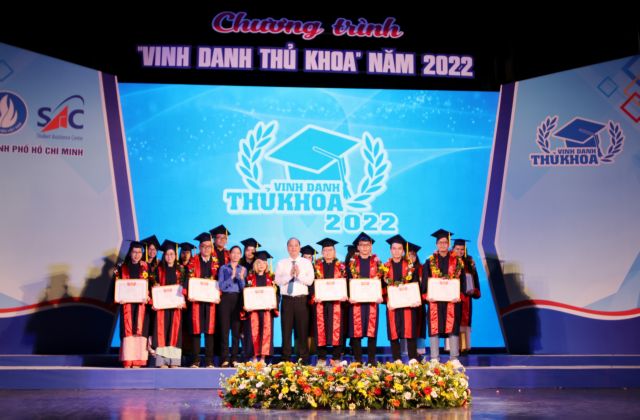 Society
Society

 |
| Students with excellent graduate results are awarded in HCM City. — VNA/VNS Photo Thu Hương |
HÀ NỘI — The Government targets that by 2025, talents being attracted to work in State agencies will account for about 10 per cent of the total number of new employees.
The target was set in Decision 899/QĐ-TTg issued on July 31 by Prime Minister Phạm Minh Chính. The decision approved the national strategy for attracting and utilising talents by 2030, with a vision to 2050.
The strategy’s overall objective is to develop and effectively implement breakthrough policies and solutions to attract and utilise talents, both domestic and international, especially in the key industries of science and technology, education and training, culture, medicine, information and communication and digital transformation.
The strategy will promote industrialisation and modernisation of the country and international integration, realising the goal that by 2030, Việt Nam will become a developing country with modern industry and high middle income. By 2050, Việt Nam will become a developed and high-income country.
Specific goals include that by the end of June next year all ministries and localities will have plans to attract and utilise talents in line with the national strategy and practical requirements.
By 2030, with a vision to 2050, it strives to maintain the rate of talents working in State agencies not less than 20 per cent of the total number of new recruitments annually.
The strategy also aims that all of the talents will continue to work after five years of recruitment.
The rate of talents further trained in the field of science and technology will reach 30 per cent by 2025, 60 per cent by 2030 and 100 per cent by 2050.
Talents include students with outstanding academic achievements, graduating with excellent grades; people with master's and doctorate degrees, and professors whose research is recognised and highly practical.
It will also include public employees working at the State, Party, and Fatherland Front agencies with outstanding capabilities, and people with outstanding qualifications and practical experience who are working both domestically and abroad.
The strategy also encourages people to introduce and recommend talents.
Ministries and localities should actively coordinate with universities and schools to detect young talents early and strive to improve the quality of their own training.
Specifically, it encourages renovating training and retraining programmes in the direction of maximising capacity development.
It will strongly develop some of Việt Nam's top universities into leading regional education centres, gathering and developing lecturers who are experts, scientists, leaders, and business managers with good qualifications, experience, and reputations domestically and abroad.
The strategy focuses on inviting professors and leading experts of Vietnamese origin who are living abroad to return to work and teach in Việt Nam.
It requires non-public schools to participate in research and training high-quality human resources for the country.
Schools are encouraged to develop programmes and plans for cooperation with highly reputable foreign schools to train and foster talents according to the needs and standards of the region and the country’s economic situation.
Universities will create favourable conditions for learning and research so that young people will have opportunity to develop their strengths.
The strategy also improves the capacity for public agencies in the fields of scientific research, technology, education, health, culture, social sciences and other key fields by providing high quality human resources to serve the cause of the industrialisation and modernisation of the country. — VNS